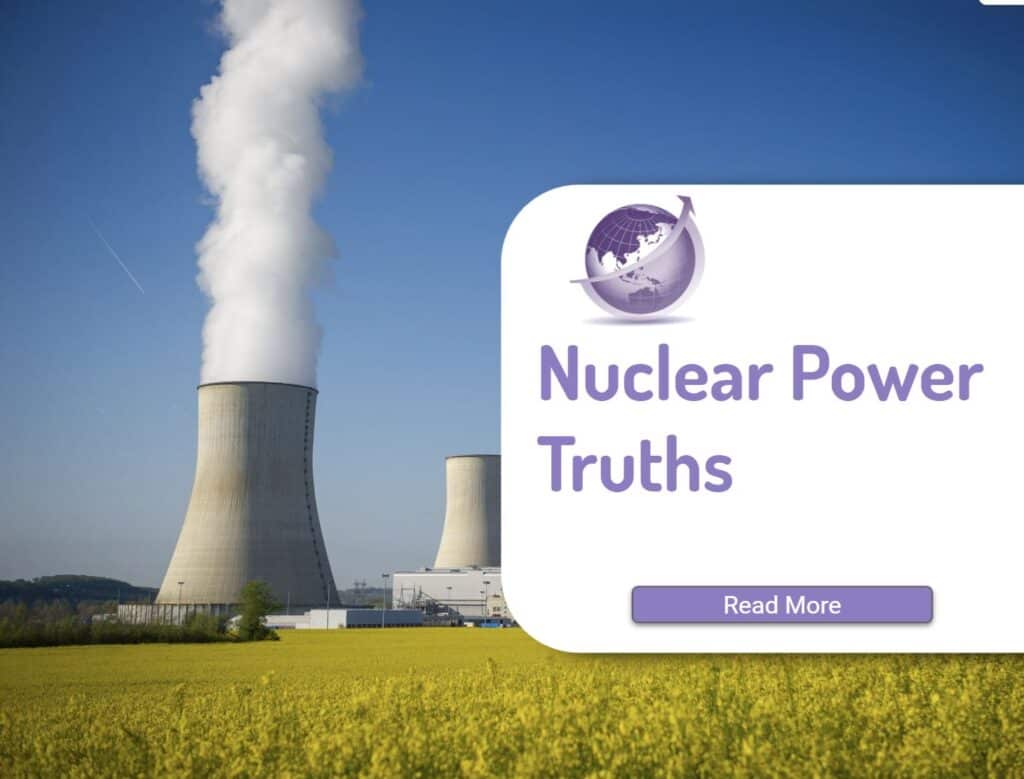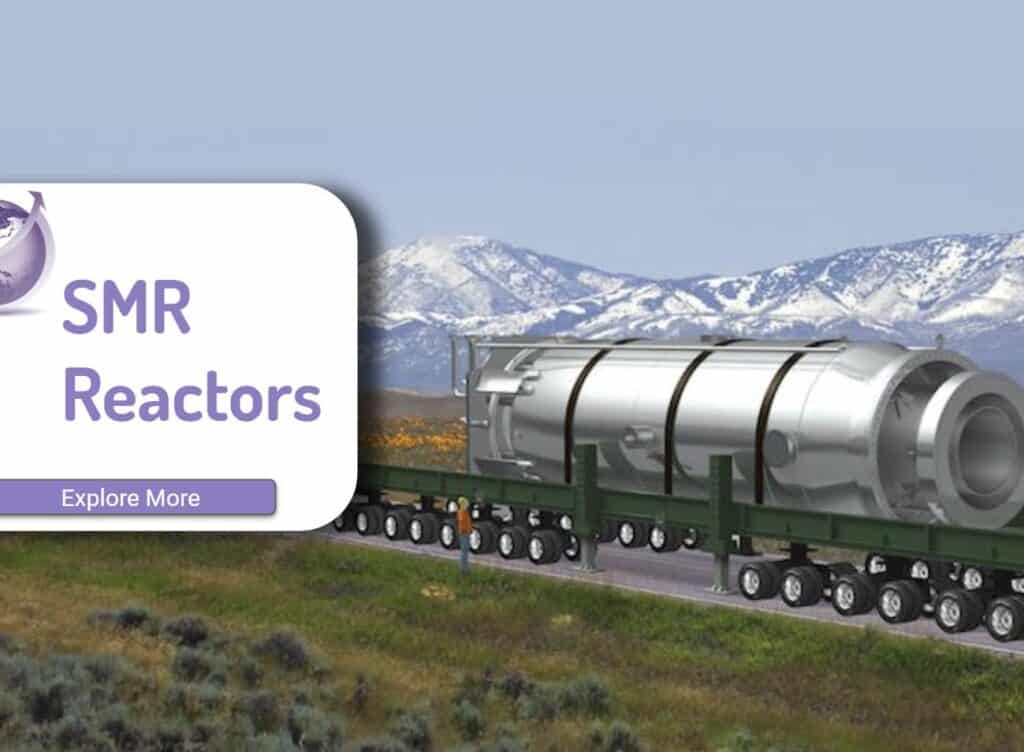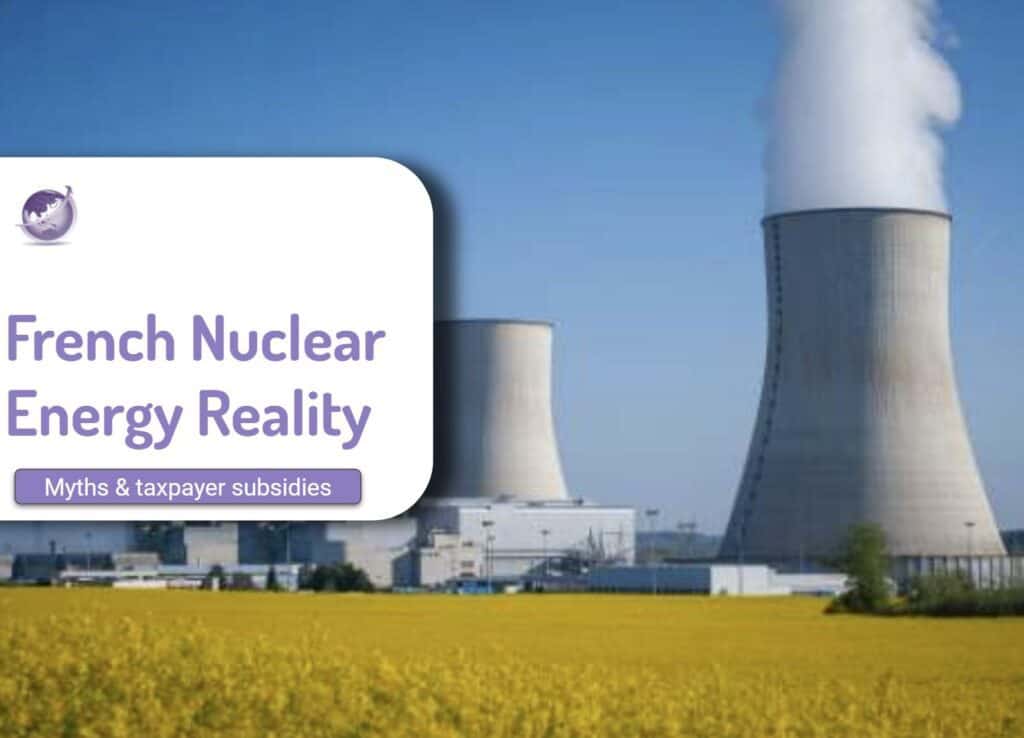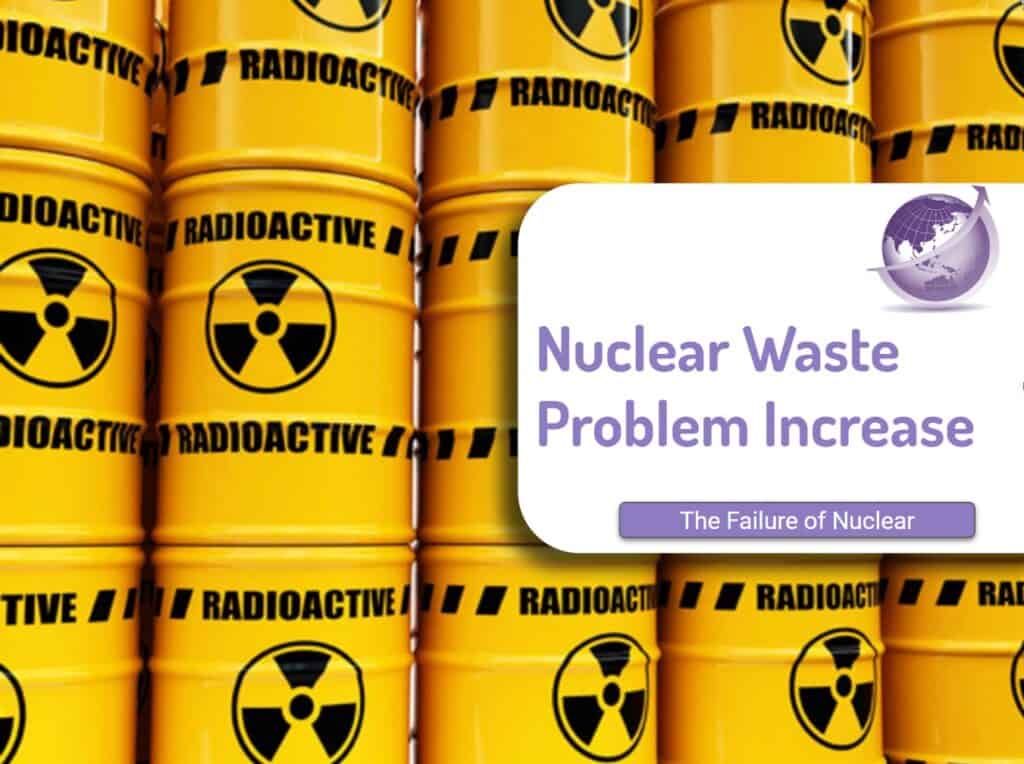Nuclear waste problem exaggerated say nuclear proponents. They claim the amount and potential impact of any waste is overstated. But looking at the scope, cost and complexity and this fails on these 3 grounds.
- Technology
- Economics
- Social and political
Most of the concerns are overwhelmingly focused on “high-level waste”, which is almost entirely spent nuclear fuel. Medical waste quantity is very large but with low levels of radioactive. Medical waste has short half live. For more detail on Nuclear Waste, check out this article
What Arguments do Nuclear Proponents have?
Madi Hilly (Twitter handle @MadiHilly), the founder of the Campaign For a Green Nuclear Deal (https://gndcampaign.org/) downplays waste challenges. Primary arguments ignore the two primary isotopes, U235 and U238. These isotopes decay at a constant rate. The half-life or the time for the activity to reduce by half:
- U235 is 700 million years
- U238 is 4.5 billion years
- Plutonium. Pu-239 has a half-life of 24,100 years
- Pu-241’s half-life is 14.4 years.
- Cesium-137 30 years
- Strontium-90, 28 years
The waste stream include all of these. Various systems refine waste to pull these out and reuse them. Wikipedia has more details on nuclear waste.
Three Strategies for Waste Solutions
- Short-term is segregation and storage on the surface or near-surface.
- Long term by burial in a deep geological repository
- Re-use and transmutation to reduce the high level waste
Exaggerated Nuclear Waste Problem – Lets Follow the Processing Steps
- Nuclear fuel contains uranium pellets in metal tubes.
- Bundles of tubes are loaded or unloaded into the reactor.
- Nuclear fuel spends about five years in a reactor making energy
- After removal from the reactor, the spent fuel cools in a pool of water. This may be for another five years.
- After a further 5 years, concrete and steel “casks” entomb bundles of these rods.
- Storage of the casks is onsite, in rows, next to the reactor.
- Uranium is very energy dense and the amount of waste is relatively small.
- All of the fuel rods ever used by the commercial nuclear industry since the late 1950s could fit on a single football field stacked about 50 feet high.
- No one wants to have this in their backyard

- Over 90% of the potential energy from the uranium remains in the fuel rods at the end of the cycle and removal from the reactor.
- Europe, Russia, and Japan routinely recycle spent fuel and turn it into new fuel
How is Nuclear Waste Problem exaggerated – Time!
These are the typical discussion points nuclear proponents make
| Proponents Argument | Counter Argument |
|---|---|
| The main concern associated with spent nuclear fuel – radioactivity – diminishes with time. | All man-made structures have much lower resilience |
| Plutonium with its half-life of 24,000 years pales in comparison with the oldest human structure are ~10,000 years (just identifiable ruins), durability problems? | Has only been possible in 1 Western democracy. |
| About 40 years after it’s done making power, the heat and radioactivity of the fuel bundle will have fallen by over 99%. | Concentration is important but so is absolute amount. |
| Most of the industrial waste we manage never gets less toxic over time. | 45,000 years is a long time. We are simply pushing the problem to our grandchildren’s grandchildren or more |
| Mercury, lead, cadmium, arsenic, etc. are all dangerous and remain so forever. | Depends on levels, and there are proven scientific and economic pathways |
| In rich countries, this waste is gathered up and stored without fanfare. | Due to EPA and other regulatory bodies |
| There’s nothing special about radiation that would prevent us from doing this with high-level waste. | Has only been possible in 1 Western democracy. |
| The only difference is that high-level waste is much easier to detect and thus easier to monitor. | False |
| Rather than being honest and explaining that 1) radiation does not make nuclear waste uniquely dangerous and 2) dry cask storage at the plant is safe, cheap, and has a flawless record, the industry has attempted to offer technical solutions to what is a political problem. | Downplays technical, economic and political considerations |
| Yucca Mountain is an anti-scientific dumpster fire, eating up public wealth. | Misunderstand the scientific process and ignores scientific diligence |
| Yucca Mountain $15 billion flushed for no benefit. | Discounted benefits and risks. It was a poor decision at the start by the corporations desperate for any solution. Cannot help stupid. |
| Scientists and engineers abuse public trust when they pretend we must bury nuclear waste deep underground or put it in the middle of a desert. | The concentration of uranium is key. As a mined product it is limited concentration. However nuclear concentrates to a high risk product |
| Any “expert” who believes this is, at best, confused about the role of science and engineering in advising public policy. | Misunderstand the scientific process and ignore scientific diligence |
| The Netherlands offers a compelling solution: encourage people to visit! | Promotion and public relations is not a counter to science, and economic solutions |
Option 3 – Use Fast Breeder Reactors
A dream is to reuse nuclear waste. The potential is millennia of zero-carbon electricity for Europe. The challenge is to recycle the waste and repurpose this for fuel for advanced nuclear reactors. (Energy Monitors)
A fast reactor sustains the fission chain reaction by fast neutrons (carrying energies above 1 MeV or greater), as opposed to slow thermal neutrons used in thermal-neutron reactors. How can we reuse the spent nuclear fuel, the most radioactive part of nuclear waste?
The opportunity is to create between 600 and 1,000 years of carbon-free electricity for the EU, according to the research.
What a Waste’ campaign argues that instead of money to bury waste, investment to develop fast reactors is a better investment.
There is only 1 problem with fast breeder reactors’ costs double the price.









